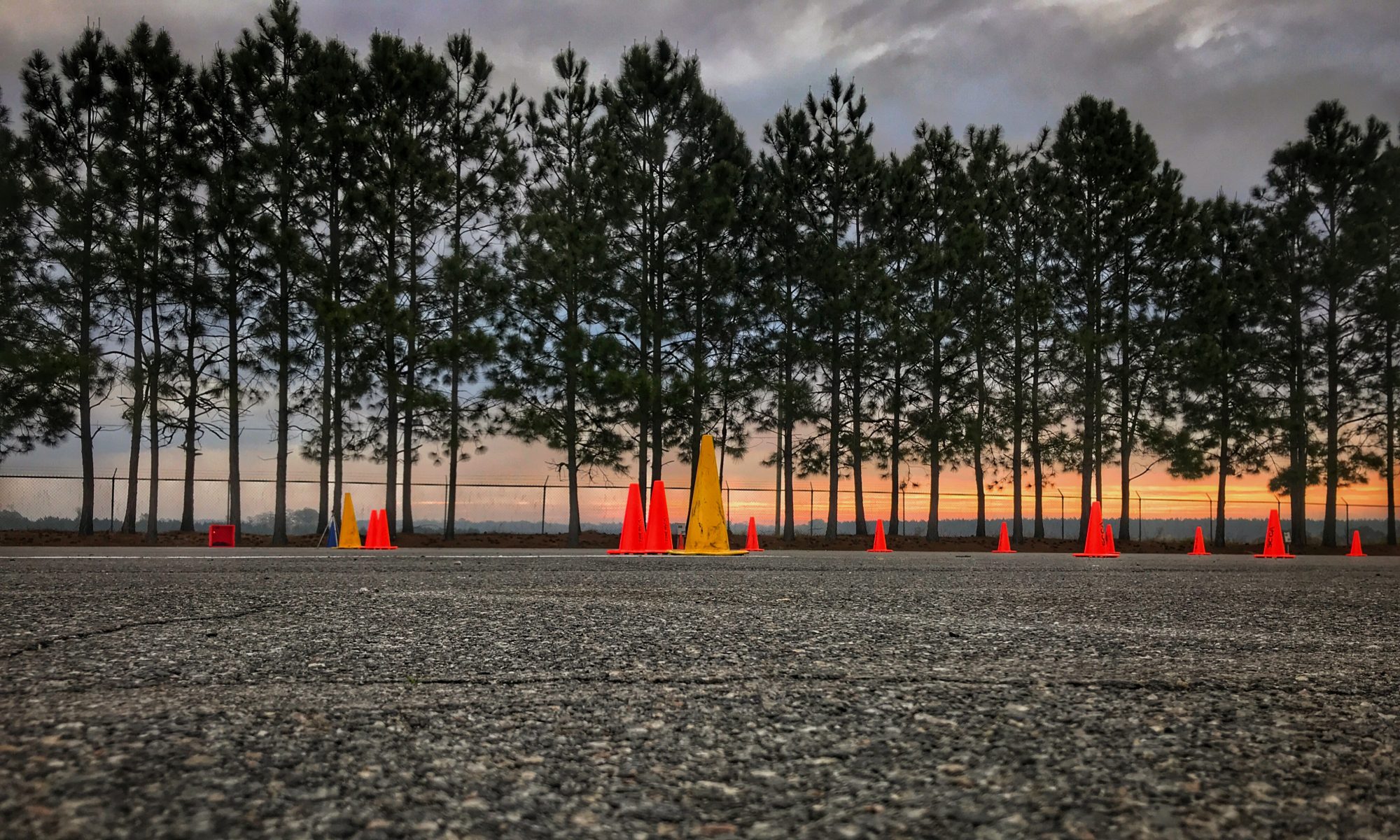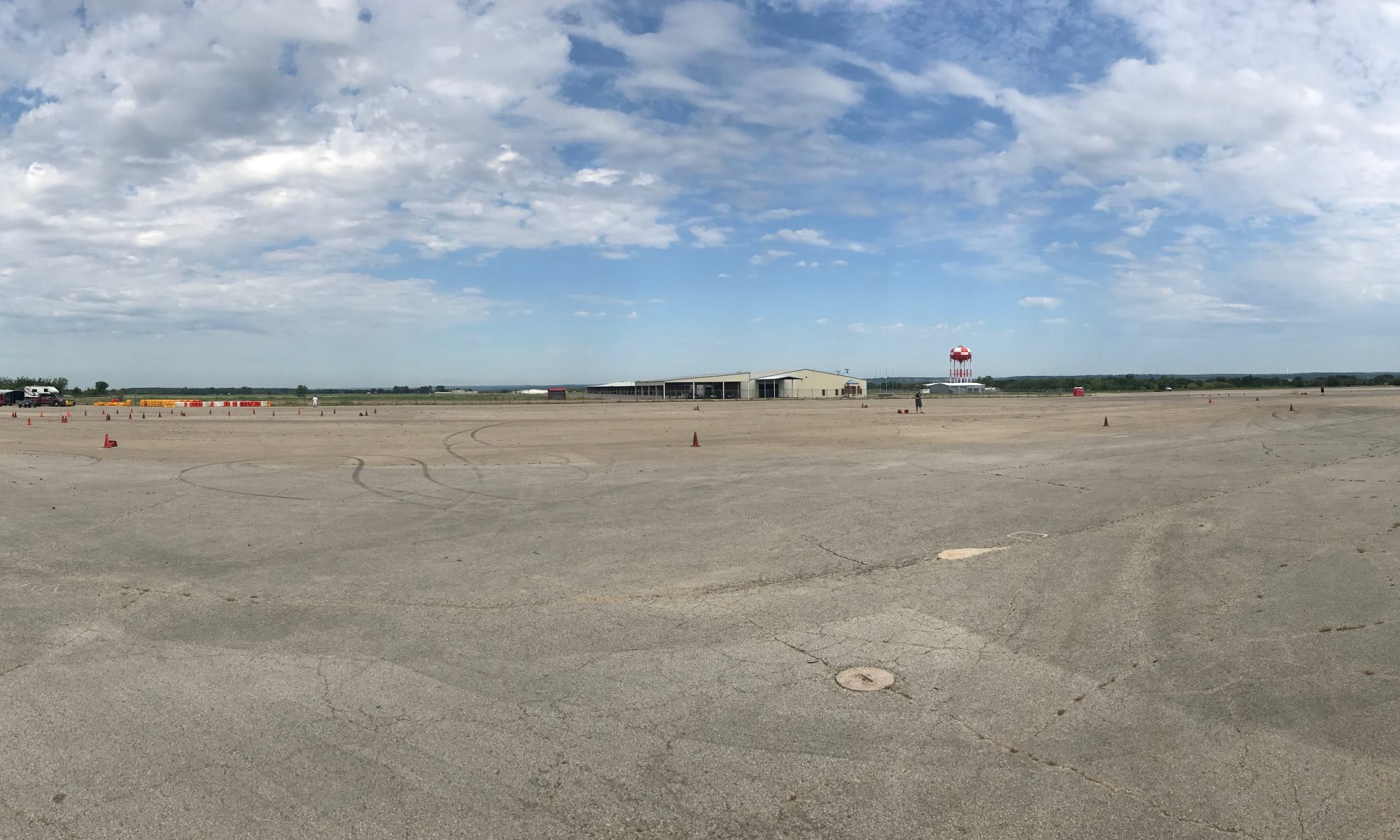 Since 1993, many would-be national champions or perennial local competitors seeking autocross enlightenment have pasted through the hallowed halls of the Evolution Performance Driving School. Well, to be clear, the Evo School does not actually have walls. Instead, the various phases of the Evo School are hosted by local clubs all over the country. The curriculum is standardized and the student to instructor ratio is consistent no matter the location. The Evo instructors are often multi-time National champions, and can come from all across the county.
Since 1993, many would-be national champions or perennial local competitors seeking autocross enlightenment have pasted through the hallowed halls of the Evolution Performance Driving School. Well, to be clear, the Evo School does not actually have walls. Instead, the various phases of the Evo School are hosted by local clubs all over the country. The curriculum is standardized and the student to instructor ratio is consistent no matter the location. The Evo instructors are often multi-time National champions, and can come from all across the county.
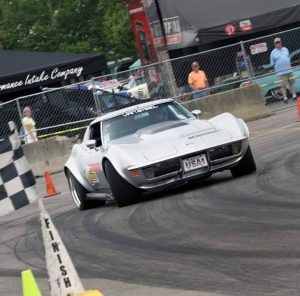 The Evo School is currently owned by Mike “Junior” Johnson, himself a multi-time National Champion. He first heard about the school after he had already won his first championship. Despite having early success without schooling, he took his first course in 2000 with an open mind and discovered concepts he hadn’t previously known and better understanding of the ones he had known. By 2007, he and some partners had acquired the school from the original founders, Jim McKamey and Jean Kinser, and as of 2012 he is the sole owner. While SCCA Solo is the source of most of his students, the growth of Optima Ultimate Street Car and Goodguy’s autocrosses has enabled Junior to expand the reach of the Evo School to a larger audience. Promoting autocross obviously has professional benefits but there is no question he would be an advocate for our sport no matter the situation.
The Evo School is currently owned by Mike “Junior” Johnson, himself a multi-time National Champion. He first heard about the school after he had already won his first championship. Despite having early success without schooling, he took his first course in 2000 with an open mind and discovered concepts he hadn’t previously known and better understanding of the ones he had known. By 2007, he and some partners had acquired the school from the original founders, Jim McKamey and Jean Kinser, and as of 2012 he is the sole owner. While SCCA Solo is the source of most of his students, the growth of Optima Ultimate Street Car and Goodguy’s autocrosses has enabled Junior to expand the reach of the Evo School to a larger audience. Promoting autocross obviously has professional benefits but there is no question he would be an advocate for our sport no matter the situation.
BackGROUND
In 2017 I attended both days of a mid-July school in Mineral Wells, Texas. This constituted my fifth and sixth class with Evo over my autocross career. I was taking Phase Two for the third time, but the real reason for the trip was to participate in my first Evo Challenge School, which is essentially Phase Three.
The primary phases have changed very little since the founding of the school. Some more specific classes have come and gone and come back again that dealt with data acquisition, car set-up, etc.; but the courses that most people have been exposed to in the last twenty-four years are largely unchanged. When you take the school, you can be sure your instructor was a former student and likely so was his instructor.
Phase One is the introductory course from the Evo catalogue. The SCCA has introduced their “Starting Line” course but it seems to be geared more towards beginning drivers just getting into the sport. Evo Phase 1 is designed for those brand-new drivers all the way to more seasoned drivers. I have witnessed drivers with zero autocrosses under their belt come away very satisfied with what they learned and have seen 4-year veterans just as fulfilled by Phase One.
The core focus is on the concepts you’ve probably overheard a million times around any autocross event you have ever attended – “Look Ahead”, “Backside the Cone”, “Slow in Fast Out”, etc. The difference being that after Phase One you know what those concepts mean and have most likely executed them successfully at least once. Ultimately, the focused instruction allows everyone to learn and make progress no matter what experience they bring into it.
Phase Two is a head game. The instructors try to simulate how you might mentally approach a real event. In most cases you won’t be able to walk the course multiple times or when you do you’ll be busy socializing. So, you are taught how to visualize a course and further the process of looking ahead. This class teaches you how to read and interpret a course the way most Nationals trophy winners do. Eventually you are driving courses you have only walked in your mind, and your ability to focus on key elements of the course are heightened.
During Phase One and Two, the instructors drive your car to show you the different techniques featured in each phase. They do not drive your car to the limit, instead opting for 8/10thsor so. The Challenge School takes place with less frequency, but the draw is the opportunity to run head to head with the instructor in your car driving 100% on a course featuring national level elements and size. The instructors continue to enforce the concepts you learned (or maybe didn’t learn enough) in Phase One and Two.
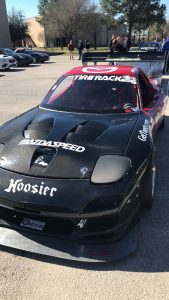
Before attending the Phase Two/Challenge weekend in Mineral Wells, my most recent class was Phase One and Two in early April in San Antonio, so a lot of the concepts were fresh in my mind. However, I had taken that class in my street car (a C7 Z06) and was looking forward trying the concepts on my dedicated autocross car (an XP RX7), which tends to kick my ass. For Saturday’s Phase Two Class the instructors were David Whitener and Gerry Terranova. Both have taken the school many times (Gerry has taken a course as a student every year since 1994). Both have multiple National Championships, and both had been instructors in my most recent school in San Antonio, although I had never been in the car with Whitener.
This class was unique because it wasn’t hosted by an autocross club. David and Gerry rented out Mineral Wells themselves for the purpose of the course (David has his own cones and timing system. Seriously, who does that?). It also had about half the attendance of the previous Phase Two courses I had taken. It turns out they liked to keep the class smaller so we could fit in a nice air-conditioned room at the terminal building during our “working” lunch. This was simply brilliant, as we were welcomed to Mineral Wells with the standard heat that comes to Texas in July. Temps topped out at 95F and the noticeable absence of a breeze didn’t help matters.
Phase 2
The class followed the standard Evo Phase Two curriculum, and the course design was consistent with the one I had been on in April in San Antonio. Only two of the students had taken Phase Two before, and we were asked not to reveal the surprises the instructors throw at you during the day, so I won’t here either.
Most of the class is spent on visualization, the practice of mentally driving the course before you even get in the car. I found this very helpful in the past and the refresher was welcome. Another technique they try to beat into you (especially Gerry), is verbalization. The idea is that you talk yourself thought the upcoming elements of the course as you are driving which forces you to look ahead. Many students loved this technique, and I can see the benefit but for some reason I just could not do it. I hope to practice this more in my local events.
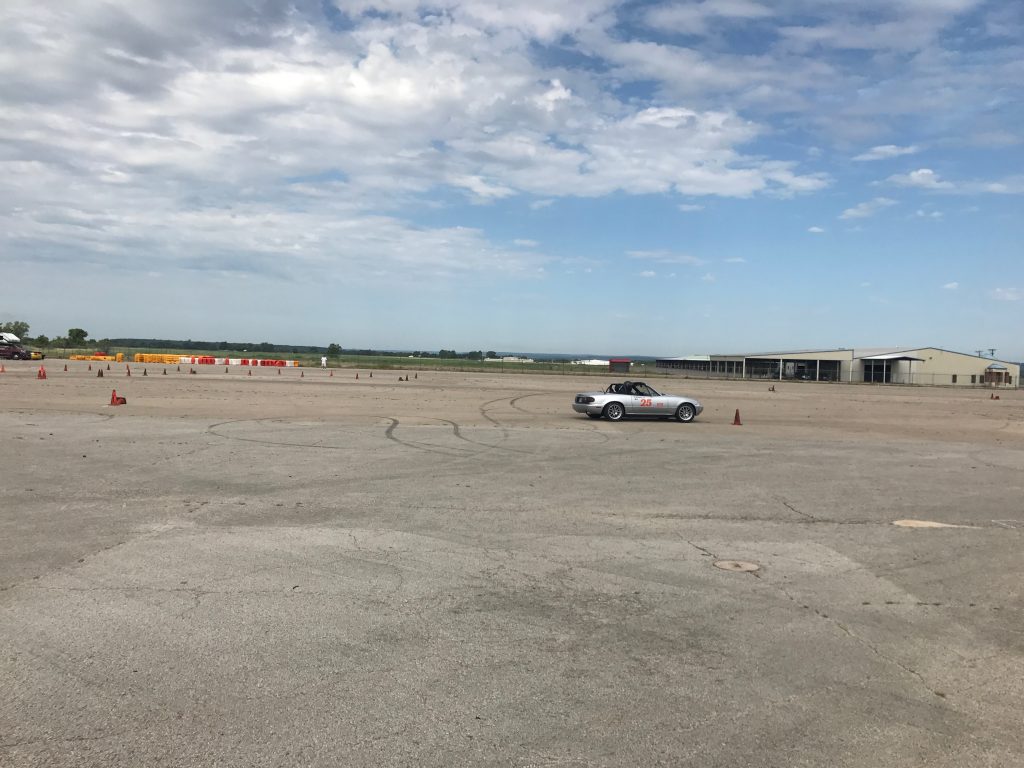
We ran phase two completely without timing, which I am sure shocked a few of the new folks in attendance. During my previous Phase Two experiences the timer had been shutoff for portions of the class. I never once missed the timer. When you are working on certain techniques shooting for a better time can cloud what you are trying to achieve. We all can feel when we have blown an element, we don’t need the clock to remind us.
I find one of my favorite portions of the school are the driver’s meetings that occur between the various sessions. Generally, they go through the group and we all discuss what we learned during the portion of the class. Sometimes someone describes a technique or element in a way that causes it to suddenly click in your head, despite having heard the same thing multiple times in a different format.
All in all, we ran over 20 runs that day. After the class wrapped up on Saturday, most of the students went home. Only two of us had signed up for both Phase Two and Challenge. Dave Ogburn, another multi-time National Champion, arrived late afternoon to help with the course for the next day. He would be the third instructor for the Challenge, and had been one of the instructors I had in San Antonio earlier in the year.
Challenge
Evo Challenge started the next day, and the concept is great. The instructors are driving your car as hard as you do, and as you ride along you can really feel how the car can be driven differently. You probably drive 4 times as many runs as they do but you have a target. Mineral Wells is huge, and the instructors designed a huge course. It took a little under 80 seconds to drive in an XP car, other cars were in the 90s. While it was an extremely fun course, I personally thought it was a little large to be a learning tool. There were a lot of technical elements and it was hard to focus on just one or too. The large course and the fact that we only had a single timing light meant we could not overlap and I think this cost a few runs at the end of the day (although 15+ runs was enough for me). A midday thunderstorm cost us a little time as well, but we moved up our lunch break and left for a “working” lunch at McDonald’s.
It was difficult to keep track of our times as well because Whitener’s timing system did not have a large display, so you would have to get out of the car to look at it or have someone yell it to you. This didn’t really damage the experience much but I tended to just skip trying to get my time. So, I don’t know exactly how bad Ogburn thrashed me in my own car, and maybe it is better that way. Ultimately, I am just happy that Whitener and Terranova decided to host the event, so any issues were trivial.

The instructors did attempt some helpful tweaks to the typical way things were run. Because of the course size and the stifling heat, we used a sweep car instead of course workers. When it was your time to work, you would follow the car that was running at a safe distance and pick up any cones that were hit. This worked extremely well and likely saved a few of us from heat exhaustion.
They also tried using SoloStorm in the cars as they instructed. This was an effort to counteract the small timing display and to get valuable data to compare the drivers. The idea was great but I think it became troublesome to move the equipment from car to car. In the future, it would probably be best to have anyone who has SoloStorm run their own systems and have a few spares for those who don’t have a set up. I could see a SoloStorm specific Evo course as being very beneficial or just as an augmentation to the Challenge school.
Conclusion
So, would I take another class offered by the Evo School?
Having now done six classes, it seems obvious that I believe in the process. I believe the value is extraordinary. The price of the course varies based on location (the main factor being the different site costs). Phase One & Two in San Antonio were $265 per day while Mineral Wells was only $210. That’s $400-$500 for a weekend, which is a big chunk to bite off for most of us. However, you are receiving personalized instruction from trained instructors and National Champions. Evolution has tried to keep the cost down over the years even as the expense for travel and hotels for the instructors has risen significantly. Junior tries to use some local instructors while mixing in some that you’re not going to see at every local event you attend.
The 20+ runs per day with a designed curriculum are vastly more valuable than getting that fast local driver to ride with you once at a regional event. Even in a full-fledged racing school, costing thousands of dollars, the concepts will not be explicitly tailored for autocross, as they are in the Evo School. An autocross specific school can allow you to drive the 10/10ths required of this sport, and get that seat-of-your-pants feeling you can’t experience in a road racing school. Simply put, the value of the Evo School can not be duplicated by anything else available to us as autocrossers.
